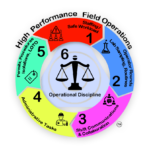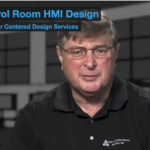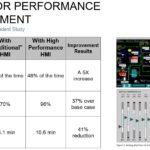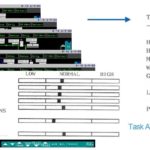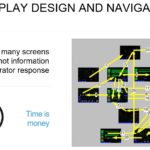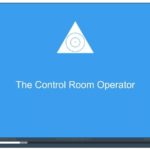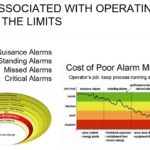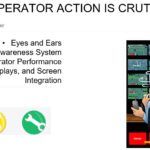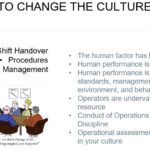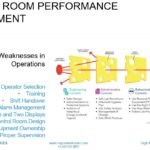Main News
6 Step to Achieve High Performance Control Room
Image 1 This is a 6 Step methodology where each step, starting with number 1, feeds into number 2, and so on. After each of the 5 steps are complete, all the information and design changes are rolled into step 6! This is an integrated methodology that promotes high-performance operations in the control room. …
Read MoreStaffing Studies
Ian Nimmo discusses how workload staffing studies are becoming increasingly important in the industry and looks at the economics of business models post COVID. In the past, time and motion studies were used to analyze staff efficiency, but that no longer works. After gathering this information, we can get a good understanding of the operator’s…
Read MoreMinimizing Risks & Consequences of Organizational Changes
“We have 8 control room operators. The union says we need 8, but we believe we only need 6. So, we outsourced a staffing study to measure the workload of each position to see if we could consolidate a few positions into a single position and where those responsibilities could be absorbed. This project was…
Read MoreSituation Awareness
Ian discusses situational awareness. Most people believe situational awareness is knowing what is going on around you at all times. But there’s more to it. It’s knowing what was going on around you 30 minutes ago, what happens 30 minutes from now, etc. This gives the operator the complete picture. A control room provides a…
Read MoreManagement of Organizational Change
Management of Organizational Change with Ian Nimmo Management of Organizational Change (MOC) has been a challenge in today’s workplace and has been a major contributor to most accidents. However, the United States Regulator OSHA has issued a Process Safety Management requirement and spelled out what is expected of industry and how to comply. Many companies…
Read MoreOther Resources from UCDS
Control Room HMI Design
President and CEO of UCDS Ian Nimmo discusses the history of HMI (Human Machine Interface) Design. He explores the evolution of HMI starting back from the processing industry when operators used analog instrumentation on control panels, all the way to describe the benefits of modern HMI today. The ultimate goal of HMI today is…
Read MoreConsolidating 2 or More Operator Positions into 1 Position
Don’t change workload without knowing the risks: We are often asked to identify where operator responsibilities can be moved from one position to another. In some cases, clients believe they can combine 2 operator positions into one. We have discovered some positions can be consolidated in specific units in the plant. Keep in mind, you…
Read More24/7 Operation Control-Rooms are Starting to look like Mission Critical Operation Centers!
“Technology Alone Cannot Replace the Human Factor – Not Today” Under the best of circumstances (in the right plant) the automation system should steer the process to the best operating condition and keep things humming along. The safety system, is there to prevent incidents like a release or burst. Between these safety layers is the control…
Read MoreControl Room Staffing Studies
In this video, Ian Nimmo discusses how staffing studies are becoming increasingly important in the industry. In the past, time and motion studies were used to analyze staff efficiency, but that no longer works when an employee uses an automation system. Staffing studies consist of collecting data on the physical amount and complexity of equipment…
Read MoreOperator Management
Apart from the operator user interface and control room or field environment, is operator behavior and management, known as Conduct of Operations. This is a system of improving human performance to ensure that every task is performed correctly, every time, even when nobody is watching. This is accomplished when you put documented standards in place…
Read MoreOperator Centered -Situation Awareness- Control Rooms
This is a perfect example of a control room that was designed for situation awareness. The operator workload was analyzed to know how to balance the workload evenly and to make sure they had the right number of operators in the room. Alarm management was implemented and the displays were designed using Level 1 and…
Read MoreHappy Thanksgiving
Thanksgiving 2020 As we reflect on 2020, we find ourselves tremendously grateful for our customers and the opportunities we have to help so many. We hope that you find moments in this holiday season to experience the same. We are thankful for you. Happy Thanksgiving from all of us at UCDS.
Read MoreWarning: Non-Process People are Designing Control Rooms
Let’s talk specifically about control room design for a minute. We continue to see major problems in the control room, from poor lighting, number of and placement of screens, screen sizes, room layout, traffic flow, noise, and distractions. One of the biggest issues is screen stacking and too many screens. These problems continue to happen,…
Read MoreControl Room High Performance HMI
UCDS President and CEO Ian Nimmo explains what High Performance HMI is and why it’s important. It’s about the operator’s ability to be performant in resolving abnormal situations. Nimmo explores the four different levels that must be set for the hierarchy of an HMI system. Your attention should be focused on the ability for an…
Read MoreHP Situation Awareness Displays Work!
It’s important to test your display designs and check results. Ultimately with any project we want to see an improvement in operator performance. That is why we call our displays High Performance Displays. During a study of traditional P&ID displays versus HP displays, we found that operators could detect a problem – before the alarm activated,…
Read MoreLevel One Operator Display Explained
This is a very simplified explanation of what a properly designed level one display can do. For ease of understanding, we performed an operator task analysis to identify the most important information that was scattered on many different displays and we combined that information into a simple list. The idea, is turning critical operator data…
Read MoreOperator Display Navigation (let’s clean it up)
We analyzed the number of moves an operator makes as he navigates from display to display, a common practice during start up and when troubleshooting abnormal situations. The operator is looking for information on multiple screens. In this scenario, the operator viewed 28 screens during a start up, looking for information that is scattered on…
Read MoreVideo Presentation By Ian Nimmo: Operator Centered Control Rooms
Operators – alarms, displays, screens, glare, fatigue, distractions, training, data overload, etc…how do we manage control rooms and improve performance? Check out this recent video: https://register.gotowebinar.com/recording/recordingView?webinarKey=7776801068881362699®istrantEmail=csalera%40mycontrolroom.com smaddox@mycontrolroom.com / www.mycontrolroom.com / 512 630 3401
Read MoreThe Impact of Fatigue in a Control Room
UCDS President Ian Nimmo explains the impact that fatigue can have in a control room. He describes what it is, and how UCDS can help you avoid fatigue for your operators. There are fatigue counter measures your company can take, that UCDS can assist in. Examples of measures include taking breaks, getting fresh air, and…
Read MoreThe 3 Ingredients for Successfully Designing Level One and Two Displays
Operators possess the ability to optimize the process while monitoring multiple variables on the control system. The operator is expected to maximize efficiency and output, often working with outside operators to achieve these goals. We rely on them to detect subtle changes in a sea of information. We have interviewed thousands of operators and we…
Read MoreCosts Associated with Poor Situation Awareness and Too Many Alarms
Nuisance alarms contribute to – poor control and wasted energy – Standing alarms = feedstock expenses, containment loss, and an increase in utilities – Missed alarms = wear and tear on equipment, increased maintenance costs, and equipment damage – Critical alarms = unplanned downtime, Injury or death, or environmental violations. Alarms are a safety layer…
Read MoreOperator Performance: A Return on Investment
So if we invest in our operators, where is the ROI? Well, Operating outside equipment and process limits is costly and risky. In the above image, focus your attention on the dotted line where the fault occurs. There is a problem, the system takes some time to generate an alarm (the problem continues to grow) then…
Read MoreOperator Centered Situation Awareness Control Rooms are Designed from the HMI (Operator Displays)!
Perform an operator Task Analysis to determine what the operators responsibuilities are and what the workload consitis of. Then design the displays using the Level 1 through 4 hiarchy. Once you know eactly what information the operator requires and the best way to display the information (not using data) using analog objects which provide the…
Read MoreAlarm Management Workbook
Ian Nimmo discusses the new workbook on alarm management that UCDS will be releasing soon. It will cover the main principles about what “good” looks like from an alarm management perspective. It will also cover the life cycle model, alarm philosophies, as well as how to identify, rationalize, implement, and maintain an alarm. This is…
Read MoreOperators and Abnormal Situations
Operators are eyes and ears of a process, like pilots, they have to manage multiple instruments at the same time. They have to be positioned to resolve issues before they escalate and become catastrophic, if we address human factors in their displays, alarms, consoles, and work environment, we can address and enhance situation awareness. To…
Read MoreControl Rooms, Displays and Screens (should be an integrated design)
So, what do operator do? Ultimately, an operator’s job is to optimize the process, maintain product quality, intervene when needed, ensure safety and production goals are met, while complying with regulatory requirements. We must think of operators with the same value and respect that we give pilots. In fact operators are much like pilots, they…
Read MoreShift Handover / Turnover is Still a Major Issue in our Industry…
Achieving operational excellence is the ultimate objective, this is a moving target, but we can get close if we can change the culture! To do that you have to focus on the workers. Many organizations have forgotten about the human factor. Human performance has taken a back seat, in the past organizations spent millions of…
Read MoreGaps in Conduct of Operations
To help operators respond to alarms and manage abnormal situations quickly and correctly, they have to be vigilant, competent, responsible, and predictive. We must identify the gaps in operational standards and behaviors and improve Conduct by putting the right management systems and tools in place. The-end-result will be, High performance operators and supervisors that meet…
Read MoreProcess Operations is in Need of New Operating Standards and Management Systems – Your Best People are Looking to Retire or Switch to Another Company
Safety, Reliability, quality, and profitability goals are driven by upper management, they want to lower operating costs, increase profit, and focus on safety – so they’ve made large investments in automation to achieve these goals. The missing link, however, is the small investment made in human factors and operational conduct. Plants and Pipelines will be…
Read More
